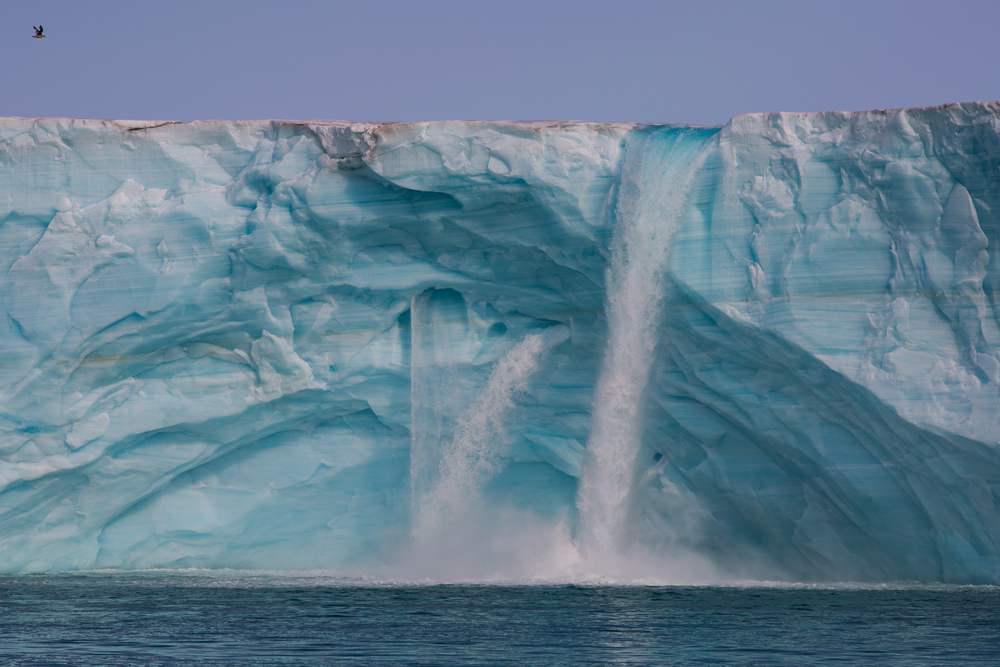Embark on a journey to one of the Arctic's most awe-inspiring natural wonders, Austfonna. Nestled in the remote reaches of the Svalbard archipelago, this vast ice cap is a hidden gem waiting to be discovered by the intrepid traveler. In this blog post, we'll uncover the mysteries of Austfonna, exploring its grandeur, understanding its significance, and delving into the environmental changes that are reshaping this frozen landscape.
Join us as we traverse the icy expanse of one of the world's least explored regions, offering insights and inspiring adventures for the eco-conscious explorer.
What is Austfonna?
Austfonna is not merely an ice mass; it's an emblem of the Arctic's untouched beauty and a critical component of our global climate system. As a polar ice cap, Austfonna's existence is a rarity, thriving in extreme conditions with minimal annual snowfall.
This unique environment creates a stark landscape, home to diverse ecosystems and scientific mysteries. The ice cap's dynamic nature, characterized by its movement and melting patterns, offers invaluable insights into climate change effects.

Where is Austfonna located?
Austfonna lies far from the typical tourist trails, offering a pristine natural sanctuary. Located on Nordaustlandet, the second-largest island in the Svalbard archipelago, it presents a unique blend of harsh Arctic conditions and breathtaking landscapes.
This isolation makes Austfonna a prime spot for scientific research and a haven for wildlife, including polar bears and seals. The ice cap's position in the high Arctic also makes it an important indicator of environmental changes.
How big is Austfonna?
Spanning over 8,000 square kilometers, Austfonna is akin to a frozen ocean, its vastness overwhelming and its landscapes ethereal. This colossal ice cap is a significant water reservoir, with its size influencing regional climate patterns and sea levels.
The scale of Austfonna also presents a unique opportunity for scientific exploration, offering insights into glacial mechanics, climate history, and arctic ecology. Its grandeur is a humbling reminder of nature's power and the importance of preserving such natural wonders.

How was Austfonna formed?
Austfonna's origins trace back to the last Ice Age, when layers of snow accumulated, compacted, and transformed into ice over thousands of years. This process, coupled with the island's unique topography and cold climate, facilitated the ice cap's growth.
Geological shifts and volcanic activity beneath the surface further shaped the landscape, creating the conditions necessary for Austfonna's formation. This natural history encapsulates the Earth's climatic fluctuations and geological evolution, making Austfonna a living record of our planet's past.
What are the unique characteristics of Austfonna?
Austfonna stands out due to its distinct structure and environmental role. Unlike typical glaciers, Austfonna's ice spreads out from a central point, creating a dome-like shape. This formation leads to unique glacial movements and melting patterns.
The ice cap's minimal snowfall, combined with its extensive network of outlet glaciers, contributes to a complex ecosystem. These glaciers act as natural laboratories, providing insights into glacial behavior and climate change. Additionally, Austfonna's interaction with surrounding fjords and the Arctic Ocean influences regional marine life and water cycles.
Recent Changes and Environmental Impact
Recent observations have unveiled significant alterations in Austfonna's physical makeup, with satellite data revealing parts of the ice cap thinning by unprecedented margins. This reduction in ice thickness not only transforms the local landscape but also contributes to rising global sea levels, presenting a tangible threat to coastal communities worldwide.
These changes in Austfonna exemplify the immediate effects of global warming, emphasizing the critical need for comprehensive environmental policies and sustainable practices to combat these evolving challenges.

Austfonna and Its Global Significance
Austfonna's evolving state reflects broader environmental trends affecting the entire planet. The ice cap's changes serve as a barometer for global climate shifts, offering essential clues for understanding the complex dynamics of Earth's ecosystems. As a symbol of the Arctic's vulnerability, Austfonna underscores the urgent need for global cooperation in addressing climate change.
By studying and responding to the transformations occurring in regions like Austfonna, we can develop more effective strategies for preserving our planet's health and ensuring a sustainable future for all.
Conclusion
Austfonna is more than just an ice cap; it's a symbol of the Arctic's untouched beauty and a reminder of the pressing environmental challenges we face. By exploring and understanding places like Austfonna, we can foster a deeper appreciation for our planet and the urgent need to protect its natural wonders.
Let's embrace the spirit of adventure and conservation as we set out to explore the Arctic and beyond. Visit Campervan Norway to embark on your journey to the heart of the Arctic, where the awe-inspiring beauty of Austfonna awaits.



 By
By 






